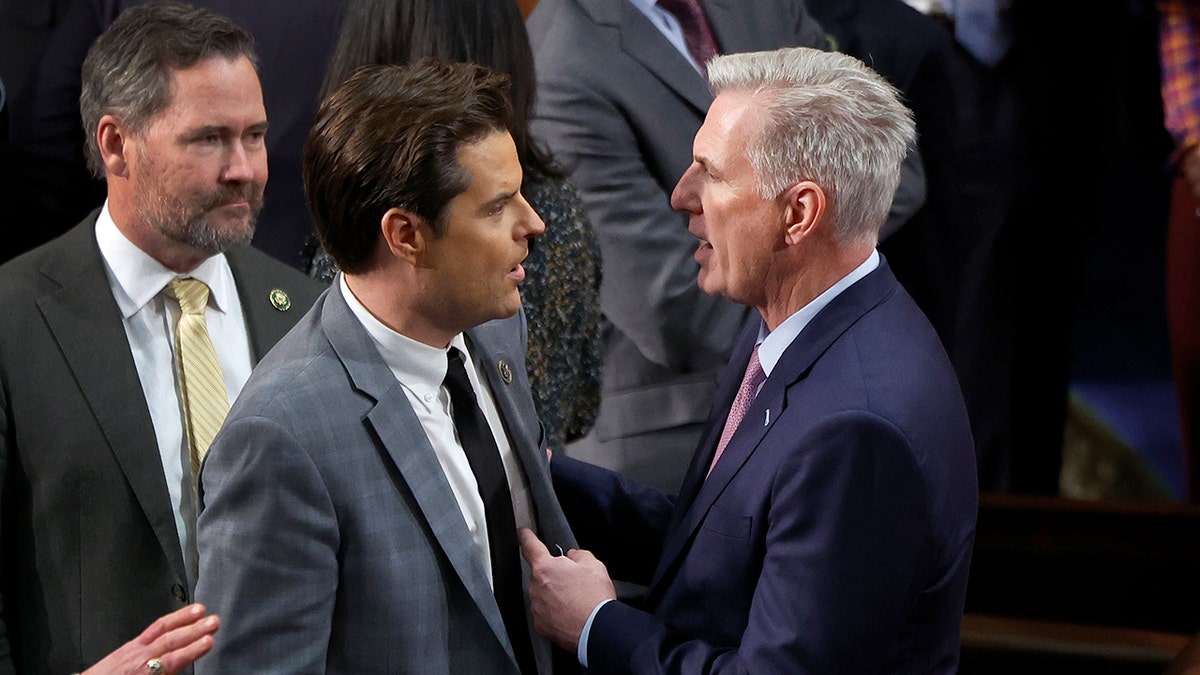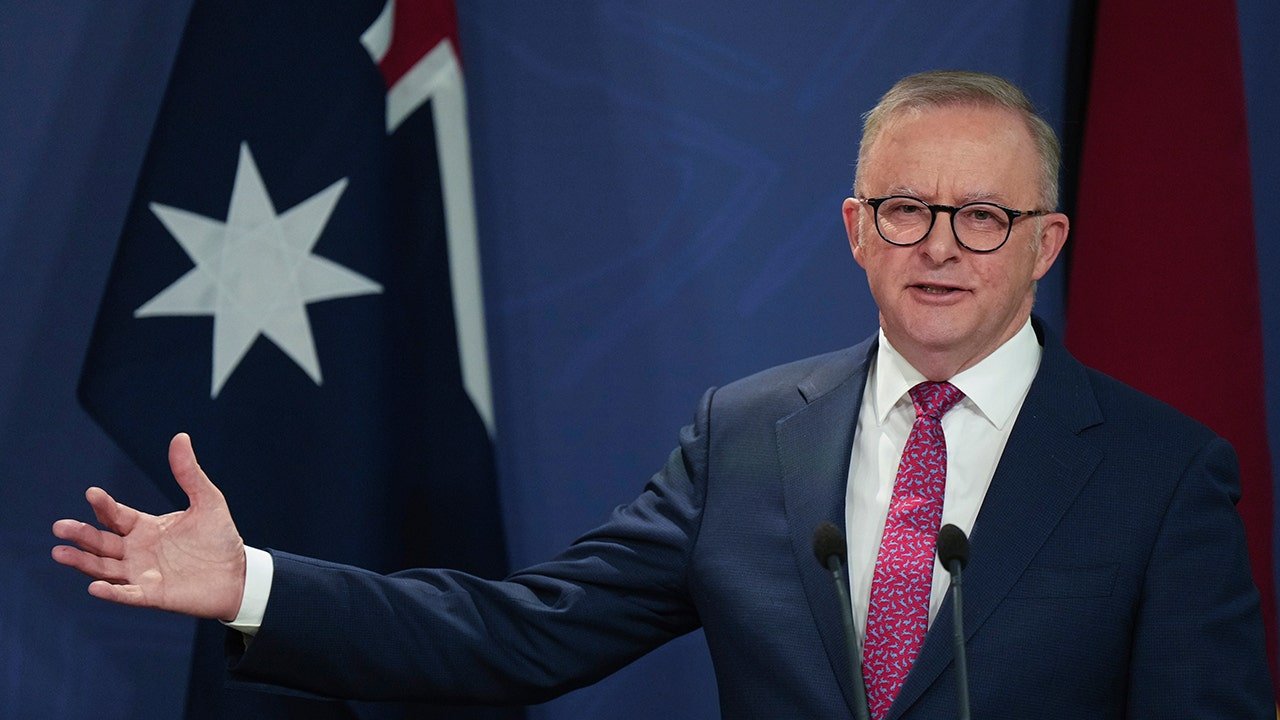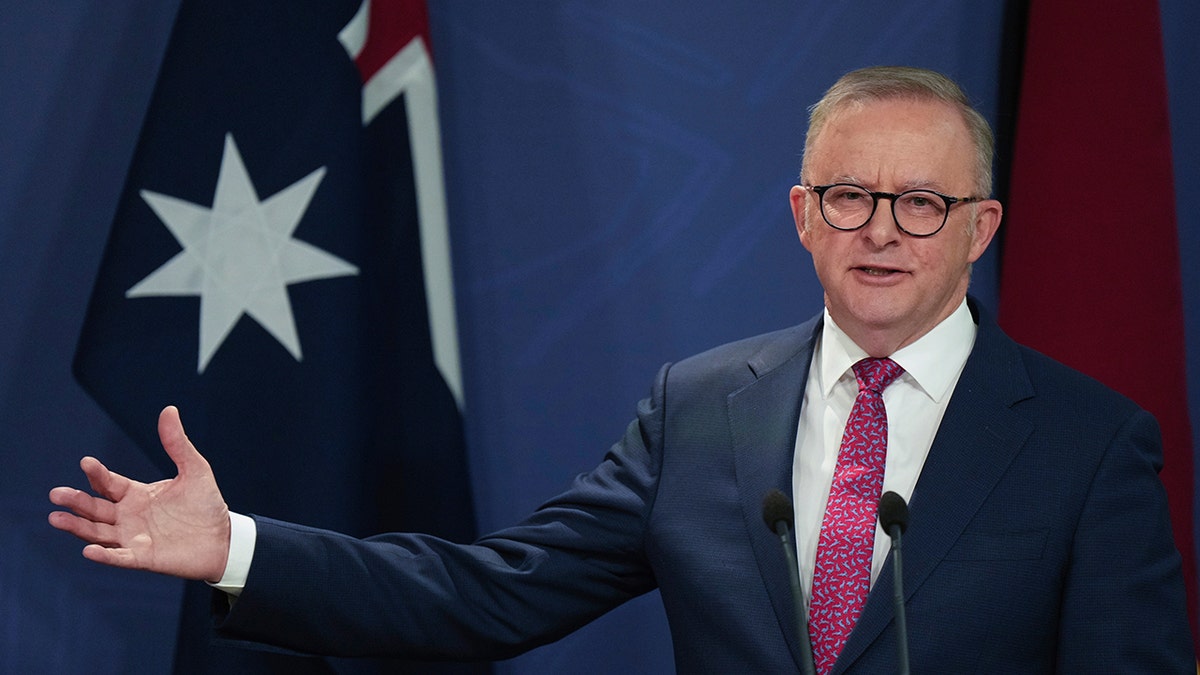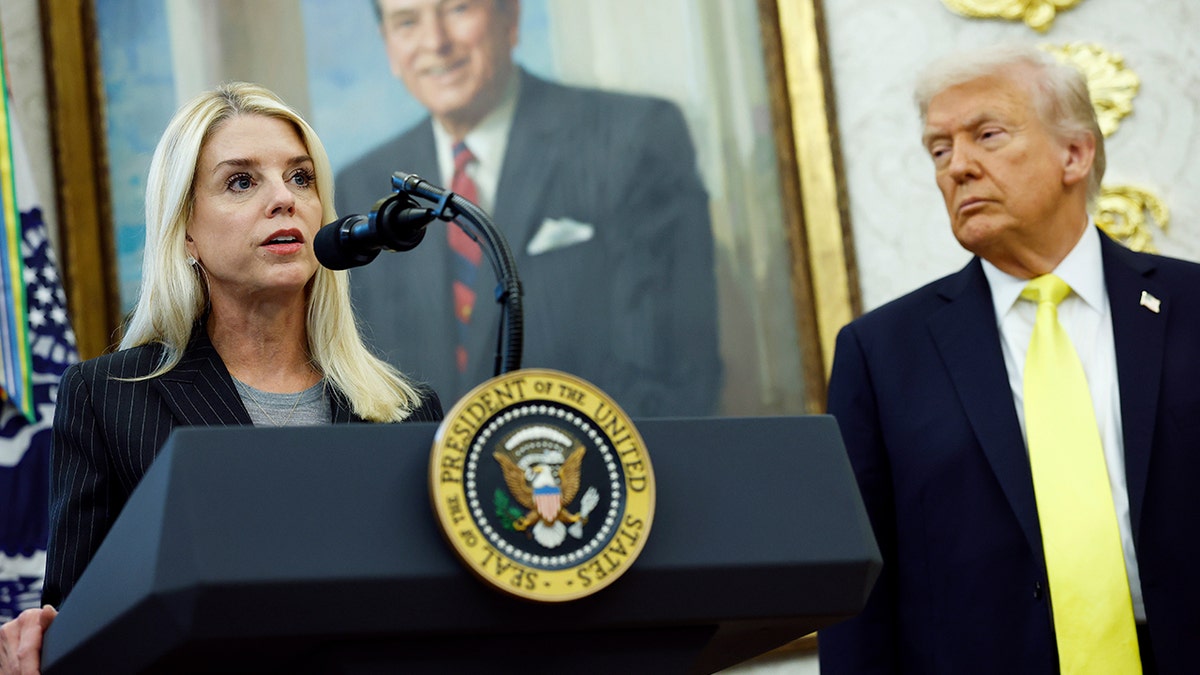INTERNACIONAL
Trick or Treat: Congress faces ‘chamber of horrors’ as government funding deadline looms

NEWYou can now listen to Fox News articles!
It was mid-July. And the House of Representatives was already done for the summer.
That’s right around the same time Halloween decorations like gigantic yard skeletons and Reese’s peanut butter and chocolate pumpkins began materializing in stores.
Those weren’t phantasms. Halloween is the next big consumer holiday on the calendar.
I mean, what would you buy to decorate for Labor Day?
But there’s a spooky alignment between July and Halloween when it comes to Congress. If you begin to see Halloween paraphernalia in July, that’s practically October in Capitol Hill terms. The reason? Congress didn’t finish its annual spending bills before the annual August recess and that means it will be a sprint to finish them by October 1, the deadline to avoid a government shutdown.
GRIDLOCK CRUMBLES AS SENATE ADVANCES SPENDING BILLS IN RACE AGAINST SHUTDOWN
Right around the same time that the rest of the nation starts thinking about ghosts and goblins for Halloween.
The funding deadline is enough to convert the U.S. Capitol into a chamber of horrors for the entire month of September. Congress is always dragging to complete spending measures in July. Then August comes and concerns about the spending bills vanish like a ghost. Then the appropriations bills rise like mummies out of their coffins when Congress comes back in September. The battle over averting a government shutdown is like a vampire. It sucks most other legislative activity out of Congress until there’s a deal. That’s because most Members want no part of a government shutdown. Lawmakers from both sides know that government funding is one of the most important inflection points on the political calendar.
Let’s examine where we stand with government funding.
Congress approved a stopgap spending bill to avert a government shutdown in March. That interim spending package funded the government through September 30, the end of the federal fiscal year. The House approved the bill. But lawmakers worried about a potential government shutdown because breaking a filibuster on the measure required 60 votes. That entailed support of some Democrats since Republicans only have 53 votes in the Senate.
U.S. Speaker of the House Mike Johnson (R-LA) delivers a statement on the Israeli museum shooting that left two Israeli Embassy staffers dead after holding a press conference on the House passage of the tax and spending bill, at the U.S. Capitol on May 22, 2025 in Washington, DC. (Kevin Dietsch/Getty Images)
At the last minute, Senate Minority Leader Chuck Schumer, D-N.Y., announced he would help Republicans crack the filibuster. Schumer didn’t vote yes on the bill itself. But the New York Democrat argued that avoiding a shutdown at that point was better than enduring one under President Trump – and Elon Musk who was then fully empowered at DOGE.
Some longtime Capitol Hill hands and Congressional observers feared the government might shutter for a lengthy period if it closed. Schumer and other Democrats asserted that the President and Musk would use that as justification for never re-opening some parts of the government since they lacked funding from Congress.
Progressives excoriated Schumer for not extracting a major concession from President Trump and Congressional Republicans which reflected Democratic values and priorities. Liberals used Schumer’s decision as justification to demand new Democratic leadership in the Senate. House Minority Leader Hakeem Jeffries, D-N.Y., appeared to seethe at Schumer’s maneuver, sidestepping questions from reporters about the break.
White House Budget Director Russ Vought says he wants a less bipartisan appropriations process. That’s fine. But this is about the math. House Republicans must stick together to pass any spending package there. House Speaker Mike Johnson, R-La., can only lose three votes and still pass a bill without Democratic assistance. Likewise, Senate Republicans can only lose three votes there, too. But the real hurdle is the filibuster. That’s where 60 votes are necessary. And that means the GOP must lean on Democrats – assuming they’re willing to help out.
HILLARY RIPPED AS ‘MASSIVE LIAR’ AFTER SCATHING REACTION TO TRUMP’S PLAN TO FIX DC CRIME
It’s really unclear if Republicans can stick together to approve a spending package. Keep in mind that it’s almost a certainty that any spending measure must simply renew all current funding on a temporary basis. A lot of Republicans are fed up with this appropriations rut – especially since Johnson promised to do things differently once he claimed the Speaker’s gavel in October 2023. Remember that some conservatives helped bounce former House Speaker Kevin McCarthy, R-Calif., less than two years ago because he propounded an interim spending plan.
Some Republicans are beginning to lose patience with Johnson on spending plans. But remember that most Republicans will support whatever appropriations plan the GOP brass concocts – as long as it has the blessing of President Trump.

U.S. House Republican Leader Kevin McCarthy (R-CA) (L) talks to Rep.-elect Matt Gaetz (R-FL) in the House Chamber after Gaetz voted present during the fourth day of voting for Speaker of the House at the U.S. Capitol Building on January 06, 2023 in Washington, DC. ( Chip Somodevilla/Getty Images)
So Vought may advocate for a more partisan process. But that won’t result in policy achievements and GOP spending priorities unless Republicans convince Democrats to play ball.
Here’s another dynamic: some members of the conservative Freedom Caucus are hinting they simply want to re-up the current levels of funding again. Yes, lawmakers approved those spending plans under President Biden and a Democratic Senate. Therefore, much of the federal government is still operating under Democratic spending blueprints. But Democrats would demand more money for the next spending round. The same with some Republicans. So voting to renew the old money – regardless of who pushed for it – is less than Congress could have spent. That’s why some Freedom Caucus members suggest this would serve as a de facto spending cut.
They’re not wrong. Federal spending is almost always on an upward trajectory. This would level things off and bend the annual spending curve for the first time in decades.
TRUMP FIRES BACK AT ‘SQUAD’ MEMBER WHO CALLED HIM A ‘PIECE OF S—‘ AT RALLY
So, if your goal is to trim funding, this may be the most plausible option under the present political circumstances.
Remember, it’s about the math.
Moreover, Republicans have only approved a pittance of the funding cuts demanded by DOGE. Congress passed a bill to slash $9 billion from the Corporation for Public Broadcasting and foreign aid. That’s not a lot. And Republicans could barely approve that bill. How they rescind other funding remains to be seen. However, Republicans could greenlight all the old money – and then promise budget hawks they will attempt to claw back other tranches of spending through future recissions packages later in the fall or winter.

Senate Minority Leader Chuck Schumer, a Democrat from New York, arrives to speak to members of the media at the US Capitol in Washington, DC, US, on Thursday, July 17, 2025. Republicans are set to succeed in their decades-long quest to end federal funding for public broadcasting after the Senate passed a $9 billion package of cuts derived from Elon Musk’s Department of Government Efficiency effort. Photographer: Al Drago/Bloomberg via Getty Images (Al Drago/Bloomberg via Getty Images)
But Democrats won’t go for that. They’d view that as Republicans dropping a Hershey’s bar in their trick or treat bag – and then exchanging it for a rock.
It’s unclear if Democrats have explored soaping the Republicans’ windows at the Capitol this fall if Republicans attempt that gambit. But this could be a chance to find out.
That brings us to the conundrum facing Schumer. One might question how the politics have changed since March – although President Trump and Musk are no longer in league with one another. But progressives will expect Schumer to demand a king’s ransom in exchange for Democratic votes breaking a filibuster.
In other words, both Johnson and Schumer face decisions of frightening proportions very soon.
It may seem as though October 1 is a long way down the calendar. It’s not. To ignore how complicated this may become is the legislative equivalent of whistling past the graveyard.
CLICK HERE TO GET THE FOX NEWS APP
This is going to become a rather spooky fall when it comes to funding the government.
Makes you want to just sit in the corner, pull a blanket up over your head and devour a bag of Halloween candy.
republicans,budget,democrats,politics,congress,mike johnson,donald trump
INTERNACIONAL
Australian prime minister’s plane makes emergency landing in St Louis after leaving Washington

NEWYou can now listen to Fox News articles!
The plane carrying Australian Prime Minister Anthony Albanese had to make an emergency landing Tuesday night after leaving Washington, D.C.
The aircraft, a Royal Australian Air Force KC-30A, diverted and landed safely at the St. Louis Lambert International Airport in Missouri, an Australian Defence spokesperson confirmed to Fox News.
«Our highest priority is providing support to the injured member and request that their privacy be respected,» a statement said.
Officials told local FOX 2 that a crew member was struck in the head by luggage, and it was believed to have fallen from an overhead bin.
TRUMP THREATENS ‘MASSIVE’ CHINA TARIFFS, SEES ‘NO REASON’ TO MEET WITH XI
President Donald Trump, right, shakes the hand of Australian Prime Minister Anthony Albanese during a meeting in the Cabinet Room of the White House, Monday, October 20, 2025, in Washington, D.C. (Evan Vucci)
That crew member reportedly suffered a concussion and was taken to the hospital.
Albanese’s plane had left Joint Base Andrews at 5:15 p.m., FOX 2 reported, and the emergency landing happened around 7:45 p.m.
President Donald Trump and Albanese signed a critical minerals deal at the White House on Monday as the U.S. had been eyeing the continent’s rich rare-earth resources. This, at a time when China is imposing tougher rules on exporting its own critical minerals abroad.
TRUMP ADMIN SLAMS CHINA’S ‘GLOBAL POWER GRAB’ ON RARE EARTHS, THREATENS TRIPLE-DIGIT TARIFFS

Australian Prime Minister Anthony Albanese gestures during a press conference in Sydney, Australia, Dec. 12, 2024. (Mark Baker, File)
The two leaders described the agreement as an $8.5 billion deal between the allies. Trump said it had been negotiated over several months.
«In about a year from now we’ll have so much critical mineral and rare earth that you won’t know what to do with them,» said Trump, boasting about the deal. «They’ll be worth $2.»

Xenotime is a rare earth element that can be found in Australia. (Getty Images )
CLICK HERE TO DOWNLOAD THE FOX NEWS APP
Albanese added that the agreement takes the U.S.-Australia relationship «to the next level.»
The Associated Press contributed to this report.
st louis,australia,politics,washington dc,foreign affairs,white house,missouri
INTERNACIONAL
Rodeado de enemigos y criminales, Nicolás Sarkozy lleva a prisión a sus custodios presidenciales

Un presidente amenazado por islamistas
Sin teléfonos celulares
Se descartó a las fuerzas especiales
Los guardias carcelarios furiosos
Piden su libertad
INTERNACIONAL
Trump suggests DOJ owes him money for past cases

NEWYou can now listen to Fox News articles!
President Donald Trump suggested on Tuesday that the Department of Justice (DOJ) owes him money for past prosecutions against him.
In the Oval Office, a reporter asked Trump if he was seeking compensation from the DOJ over past federal investigations into him and, if so, how much he was seeking.
«Well, I guess they probably owe me a lot of money for that,» Trump said in response. «No, I get no salary. I gave up my salary. It’s a good salary. Not as much as these guys make, but that’s OK. It’s a lot of money, and I don’t, as you know, I didn’t take it in the first four years. I didn’t take it these four years either.»
«But as far as all of the litigation, everything that’s been involved, yeah, they probably owe me a lot of money,» the president added. «But if I get money from our country, I’ll do something nice with it. Like, give it to charity or give it to the White House while we restore the White House, and we’re doing a great job with the White House, as you know, the ballroom is under construction.»
TRUMP ADMIN AGENCIES COORDINATING TO EXPOSE BIDEN ADMIN’S ‘PROLIFIC AND DANGEROUS’ WEAPONIZATION OF GOVERNMENT
President Donald Trump gestures as he hosts a Rose Garden Club lunch at the White House in Washington, D.C., Oct. 21, 2025. (Kevin Lamarque/Reuters)
The New York Times reported sources as saying Trump is seeking approximately $230 million in compensation from the Justice Department for investigations into him.
Trump told reporters Tuesday that he was «not looking for money,» but that they «would have to ask the lawyers about that.»
«We’ll see what happens,» Trump said. «We have numerous cases having to do with the fraud of the election, the 2020 election, and because of everything that we found out, I guess they owe me a lot of money. But I’m not looking for money. I’m looking for — really, I think it’s got to be, it’s got to be handled in a proper way… We don’t want it to happen again. We can never let what happened in the 2020 election happen again. We just can’t let that happen.»
He was later pressed again about the exact dollar amount in the request and said, «I don’t know what the number is. I don’t even talk to them about it.»
Trump then remarked that the decision would have to come across his desk, saying that it would be «awfully strange to make a decision where I’m paying myself.»

Attorney General Pam Bondi speaks as President Donald Trump looks on during a press conference in the Oval Office of the White House on Oct. 15, 2025. (Kevin Dietsch/Getty Images)
However, the Times noted that the DOJ’s rules state that settlement claims against the department that exceed $4 million «must be approved by the Deputy Attorney General, or Associate Attorney General, as appropriate.»
It is unclear where the claims or negotiations with the DOJ stand. However, The Associated Press noted that the ties between Trump and those authorized to make a decision on the settlement could present problems.
Deputy Attorney General Todd Blanche served as one of Trump’s attorneys in the Mar-a-Lago case. Additionally, Associate Attorney General Stanley Woodward represented Trump’s co-defendant, Walt Nauta, in the Mar-a-Lago case.
«In any circumstance, all officials at the Department of Justice follow the guidance of career ethics officials,» DOJ spokesperson Chad Gilmartin said in a statement to Fox News Digital.
TRUMP CELEBRATES WHITE HOUSE DEMOLITION AS NEW BALLROOM RISES: ‘MUSIC TO MY EARS’
The investigations include the FBI’s 2022 raid of Mar-a-Lago as part of the classified documents case and another probe looking into possible ties between Russia and Trump’s 2016 presidential campaign. According to the Times, the first claim was filed in late 2023 and was in relation to the Russia probe, while the second — which focused on the Mar-a-Lago raid — was filed in the summer of 2024.
The Times reported Tuesday that Trump had submitted complaints through an administrative claim process, noting that it is something that often precedes lawsuits.

President Donald Trump during a bilateral meeting with Israeli Prime Minister Benjamin Netanyahu in the Oval Office of the White House on Monday, April 7, 2025. (Yuri Gripas/Abaca/Bloomberg via Getty Images)
Despite the president saying that he would donate the funds, some Democrats painted the report as an example of Trump trying to enrich himself.
Sen. Amy Klobuchar, D-Minn., said on Wednesday morning that the president was looking «to line his own pockets, or he says now to give to a charity of his choice.» The senator added to the accusation, saying Trump was «focusing on getting $230 million that he doesn’t deserve back into his pocket instead of helping the American people get healthcare.»
CLICK HERE TO DOWNLOAD THE FOX NEWS APP
Sen. Jeff Merkley, D-Ore., who was in the middle of an hours-long speech, slammed Trump for «suing the government, then instructing his Department of Justice to settle the suit, thereby translating money into the president’s pocket out of the government.»
Merkley then remarked that «there is no limit to the self-serving» and called for his colleagues, particularly Republicans, to speak out against the president.
Fox News Digital reached out to the White House for comment.
The Associated Press contributed to this report.
politics,donald trump,justice department,white house

 CHIMENTOS3 días ago
CHIMENTOS3 días agoLa cruda confesión del Turco Naim a 1 año de la separación de Emilia Attias: «Me di cuenta que hay que aprender a estar solo»

 CHIMENTOS2 días ago
CHIMENTOS2 días agoPampita recibió un video inesperado de su hija Blanca en el Día de la Madre y no pudo contener la emoción

 POLITICA2 días ago
POLITICA2 días agoDonald Trump habló sobre la ayuda económica de Estados Unidos: “La Argentina está peleando por su vida”


























